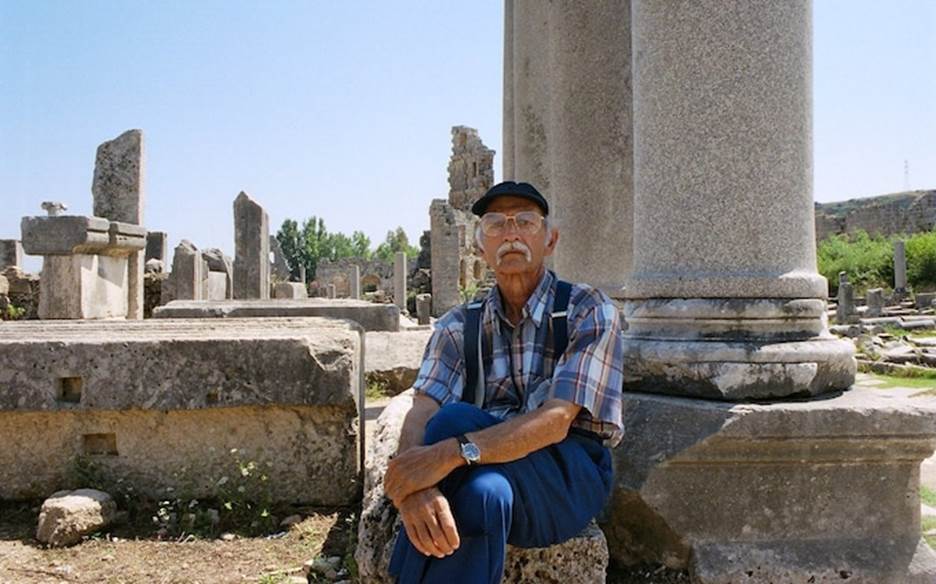
Mukarram Jah in Antalya, Turkey in 2005 - Credit: John Zubrzycki
Mukarram Jah, 8th Nizam of Hyderabad Who Inherited Vast Wealth but Ended up Fleeing His Creditors
Mir Barkat Ali Khan, who has died aged 89, was popularly known as Mukarram Jah, and was the titular 8th Nizam of Hyderabad, having inherited the title from his grandfather, Mir Osman Ali Khan, in 1967.
In 1937 the 7th Nizam had featured on the cover of Time magazine as “the world’s richest man”, but partly due to the family’s diminished status in an independent India, a host of relatives trying to secure access to the remaining fortune, and a long-running legal dispute over money deposited in a London bank, the five-times-married 8th Nizam was beset by family, marital and financial troubles.
After years of running a ranch in the dusty Australian outback, he spent most of the last few decades of his life living as a recluse in a two-bedroom flat in Antalya, southern Turkey, later moving to Istanbul, where he was looked after by carers.
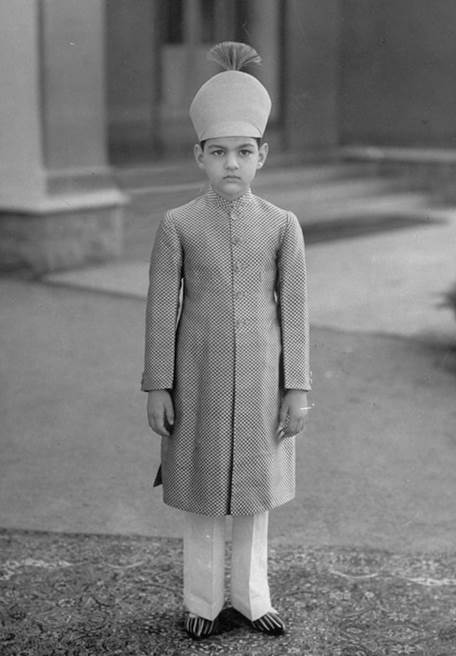
Prince Mukarram Jah as a boy Credit:
Jack Birns/The LIFE Picture Collection/
Shutterstock
Mir Barkat Ali Khan Siddiqi Mukarram Jah was born in Nice on October 6 1933 to Azam Jah, eldest son of the 7th Nizam, and Princess Durru Shehvar , the daughter of Abdulmejid II, the last Sultan of Turkey and deposed Caliph of the Ottoman Empire. Abdulmejid had been living in penury in Europe after being evicted by the Kemalists but had been rescued by the Nizam, who reportedly gave him a monthly pension of £300 and arranged in 1931 for his two eldest sons to marry into Abdulmejid’s family.
As part of the marriage arrangements, Abdulmejid had nominated Azam Jah as heir to the Caliphate, so uniting the supreme spiritual authority of the Muslim world to its richest family.
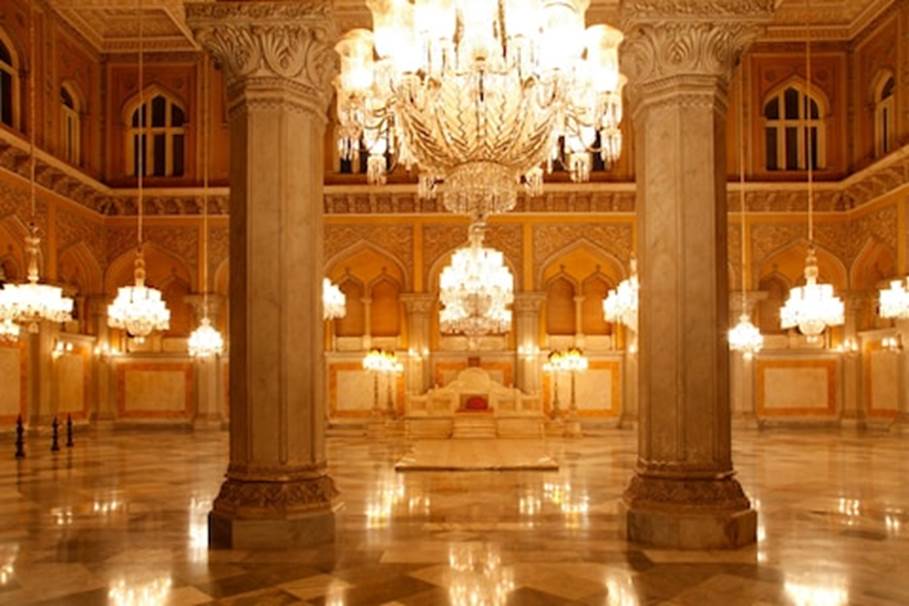
The grand pillared Durbar Hall at Chowmahalla Palace, Hyderabad: the 7th Nizam employed 38 people just to dust his chandeliers - Credit: Alexander Belokurov/ Moment Editorial
For some 250 years previously the Nizams had ruled Hindu-majority Hyderabad – a state in southern India about the size of Italy – as their personal fiefdom. The family owed its wealth to the mines of Golconda, which produced the Koh-i-Noor diamond among other spectacular gems. Given preferential treatment by the British, under the Raj they were largely left to run their internal affairs. They built palaces, amassed priceless Mughal art and employed more than 15,000 people on retainer, while most of their millions of subjects lived in poverty and destitution.
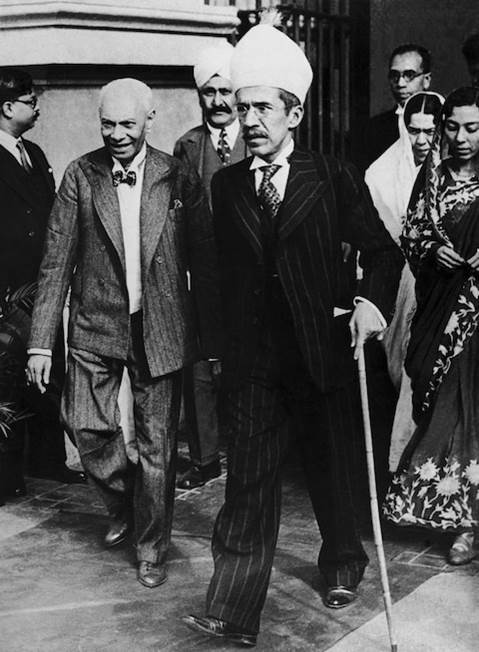
Mir Osman Ali Khan, the seventh Nizam
of Hyderabad – Credit: Keystone-France/
Gamma-Keystone via Getty Images
Jah’s grandfather, who inherited as the 7th Nizam in 1911, cut an eccentric figure who combined jaw-dropping extravagance with extreme parsimony. His jewelry collection was said to be so large that the pearls alone would cover most of Piccadilly Circus. He used the 184-carat Jacob diamond, the fifth-largest in the world, as a paperweight, bought a fleet of Rolls-Royces which he used to collect Hyderabad’s rubbish, and employed 38 people just to dust his chandeliers.
Iris Portal, the sister of RA (Rab) Butler, recalled visiting a palace vault in the 1930s full of rusting trucks and haulage lorries, their tires flat. Beneath the tarpaulins, however, were piles of gems, pearls and gold coins. The Nizam, fearing a revolution or an Indian takeover, had apparently planned to spirit some of his wealth out of the country but then lost interest.
After India became independent in 1947, the Nizam refused to sign the instrument of accession, but in 1948 the Indian Army invaded and annexed Hyderabad. In exchange for declaring his “voluntary” accession, the Nizam was allowed to keep five palaces and was given an annual allowance of about £250,000 – nothing like enough to maintain his palaces and feed his family (he reportedly had 140 children from eight wives and 42 concubines) and his huge army of retainers.
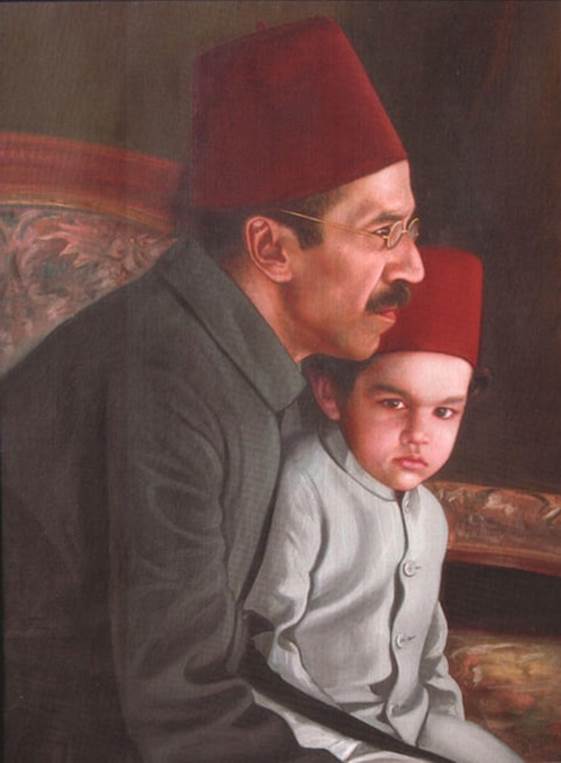
The 7th Nizam with his grandson Mukarram Jah
in the 1930s - Credit: Alamy Stock Photo
Within six years, having tried to cope by allowing himself a few pounds per week pocket money, he was claiming destitution. This saw him knitting his own socks, eating off an old tin plate and haggling with vendors as he wandered the streets of Hyderabad in a battered fez.
His grandson Mukarram Jah was educated at India’s elite Doon School in Dehradun and later at Harrow and Peterhouse, Cambridge. He also went to the London School of Economics and attended Sandhurst. By the time his education was over, his father had succumbed to alcohol and gambling, and as a consequence the 7th Nizam, who died in 1967, decided that the title of Nizam should pass to his grandson.
Mukarram Jah was a reluctant heir. He disliked India, and despite inheriting a fortune of at least £100 million in gold and silver bullion and £400 million in jewels (as estimated at the time), in addition to palaces, art and antiques, the family finances were in chaos.
Worst of all was the legal wrangling initiated by several thousand descendants of different Nizams, almost all of whom claimed part of the inheritance. From early on Mukarram Jah was obliged to sell jewelry and heirlooms to keep going.
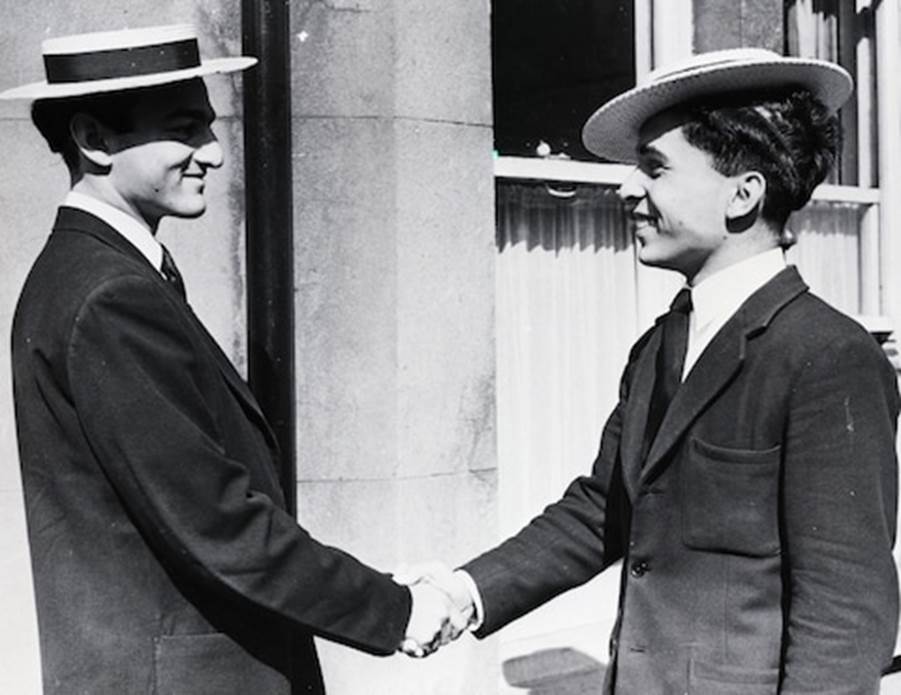
Mukarram Jah (left) welcoming Crown Prince Hussein of Jordan back to school at Harrow in 1952 - Credit: Bettmann Archive/ Getty Images
In 1973, having had enough, he moved to Australia, where he bought a 200,000-acre ranch 600 miles north-east of Perth, Western Australia. There he bred sheep and goats, delighted in “miles and miles of open country, and not a bloody Indian in sight”, drove bulldozers and tinkered under the bonnets of his cars.
In 1974 the Indian princes were stripped of their titles and pensions and subjected to new taxes. From then on Mukarram Jah was known as the titular Nizam. Sacking most of the 14,000 staff he had inherited in India, he divorced his first wife, the Turkish princess Esra Birgin, who had no desire to live on a remote Australian sheep station.
Over the following two decades he married four more times. His second wife, Helen Simmons, a former air hostess, died of an Aids-related illness in 1989, which led to details of the marriage being splashed across Australian tabloids. His third marriage, to Manolya Onur, a former Miss Turkey, ended up costing him a fortune in alimony.
Mukarram Jah was no businessman. His sheep farm never made a profit, he made dud investments, and in 1996 he was forced to sell up in Australia and flee his creditors. He moved to his flat in southern Turkey.
During all this time his Hyderabad palaces had been ravaged by looters or disposed of by unscrupulous administrators. But sometime in the early 1990s the Nizam resumed contact with his first wife, Princess Esra, and an accommodation was reached under which she agreed to try to restore some of the family’s property before it disappeared. A lawyer was hired to settle the thousands of claims to family trusts.
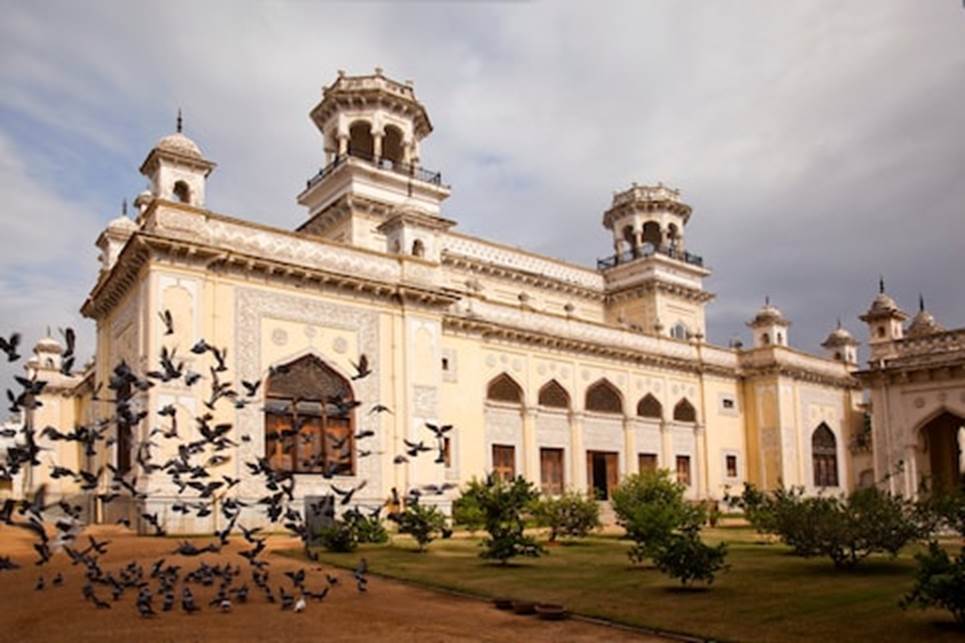
The Chowmahalla Palace, Hyderabad - Credit: Exotica.im/Universal Images Group via Getty Images
Princess Esra was instrumental in the renovation and lease of the Falaknuma Palace to the Taj group of hotels and the transformation of the historic Chowmahalla Palace into a museum after a massive conservation project. In 1995 the family jewels were bought by the Indian government for a fraction of the market value. Mukarram Jah’s share was £13 million but he never got the money as family claimants filed a series of legal suits and the case disappeared into the black hole of India’s legal system.
That left the question of the £1 million which had been deposited by the 7th Nizam in 1948 with the Westminster Bank in London at a time when he was pondering joining his landlocked southern Indian state to the newly created Muslim state of Pakistan.
While he dithered, his finance minister, to whom he had entrusted the money, had signed it over to Pakistan’s new high commissioner in London. Under pressure from India the 7th Nizam instructed the bank to freeze the account. Soon afterwards, his kingdom was annexed.
The “Hyderabad Funds Case” first arrived in the Chancery division of the High Court in London in 1954 when the Nizam challenged the bank and the Pakistan commissioner for the return of the money. In 1957, however, Pakistan successfully asserted sovereign immunity. Legal proceedings were effectively frozen until 2013, when Pakistan waived its immunity and launched legal action to claim the cash from NatWest. Their action triggered a rival claim by the Indian government, in conjunction with Mukarram Jah and his younger brother Muffakham Jah.
In 2019, by which time the missing fortune had grown to around £35 million, the English High Court ruled in favor of India and the former princes. Later, however, the Indian press reported that another grandson of the 7th Nizam, and subsequently a great-granddaughter, had filed cases in the Indian courts challenging the decision by the Indian government to concede a portion of the £35 million to Mukarram Jah and his brother. Other family legal disputes continue to rumble on.
Mukarram Jah died in Istanbul, and according to his wishes his body was taken to Hyderabad and laid to rest next to his father Azam Jah in the 17th-century Mecca Masjid.
With his first wife, Princess Esra Birgin, the Nizam had a son and a daughter; with his second wife, Helen Simmons, he had two sons, one of whom died in 2004 following a drug overdose; with his third wife, Manolya Onur, he had a daughter. His fourth and fifth marriages were to Jameela Boularous, a former Miss Morocco, with whom he had a daughter, and Turkish Princess Ayesha Orchedi.
He is succeeded as titular Nizam of Hyderabad by his eldest son, Prince Azmet Jah, a photographer and filmmaker, born in 1960. - Telegraph

